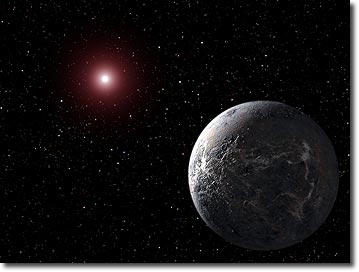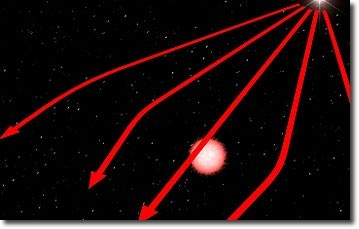Astronomers discover distant, icy Earth-like planet
An international team of astrophysicists has discovered a new planet five times the size of Earth, the smallest extrasolar planet revealed to date outside of our solar system.
Using a network of telescopes scattered across the globe, the group discovered the extrasolar planet is more Earth-like than any other planet found so far. It circles its parent star every 10 years. The discovery opens a new chapter in the search for planets that support life.
“That fact that we stumbled on one means there are thousands of them out there,” said Kem Cook, an astronomer at Lawrence Livermore National Laboratory who is also a member of PLANET (Probing Lensing Anomalies NETwork), a part of the group that made the discovery. “It’s got a solid core. Its mass is low enough that it couldn’t hold itself together if it were just gas,” Cook said.
The new planet and its red dwarf parent star lies in the constellation Sagittarius, not far from the central bulge of our galaxy.
To date, more than 200 planets within the Milky Way have been found. The majority, however, are gas giants – close to the size of Jupiter or Saturn – that orbit their parent star at distances much less than the distance from Earth to the sun. The new planet, made of rock and ice, orbits at three times the distance from Earth to the sun.
The team used a technique called microlensing, an idea that Albert Einstein came up with in 1936. By observing a particular star (A) on the sky, imagine another star (B) in the line of sight toward A. Einstein showed that when A, B and the observer are exactly aligned, a ring-like image will be formed. Star B acts as a gravitational lens by bending the light of star A toward the observer. From there, objects such as planets or white dwarfs around A temporarily brighten star B.
In this case, star A causes a characteristic brightening in star B that lasts about a month. Any planets orbiting star A can produce an additional signal, lasting days for giant planets down to hours for Earth-mass planets. The planet is not directly ‘seen,’ or even the star that it’s orbiting, but its presence can be deduced from the effect of its gravity. In the case of the newly found planet, the extra brightening lasted about 12 hours.
“There’s a deviation of light when a planet is in the way,” Cook said. “In this instance, there was a half-day brightening that was indicative of a planet.”
The new planet – designated OGLE-2005-BLG-290 Lb – orbits a red dwarf five times less massive than the sun. Its cool parent star and large orbit implies that the surface temperature is close to 428 degrees Fahrenheit below zero, much too cold for liquid water. Astronomers predict that its rocky surface is probably deeply buried beneath frozen oceans.
“There must be lots of these out there,” Cook said. “The microlensing technique is not going to find nearby planets. We’re not going to discover planets to which NASA can fly. Microlensing can tell us how common planets are in distant parts of the galaxy and probe details of planetary formation that other techniques cannot.”
The discovery is the joint effort of three independent microlensing campaigns: PLANET/RoboNet, OGLE (Optical Gravitational Lensing Experiment), and MOA (Microlensing Observations in Astrophysics), involving a total of 73 collaborators affiliated with 32 institutions in 12 countries – France, the United Kingdom, Poland, Denmark, Germany, Austria, Chile, Australia, New Zealand, the United States, South Africa and Japan.
In most cases, new planets have been found using a technique called the Doppler shift, in which the wavelength of light emitted by a moving object is shifted due to its motion. Radiation is red-shifted when an object is moving away from us and blue-shifted when the object is moving toward us. Astronomers use Doppler shifts to calculate precisely how fast stars and other astronomical objects move toward or away from Earth. As a giant planet orbits a star, it tugs it back and forth, producing a very small (meters per second) Doppler shift. Most planets found using the Doppler shift method, however, have been giant gas planets.
Microlensing is more sensitive to planets that orbit their star at distances that are in the range of the Earth-sun separation. OGLE-2005-BLG-390Lb is only the third extra-solar planet discovered so far from microlensing searches.
The new planet and its red dwarf parent star lie in the constellation Sagittarius, not far from the central bulge of our galaxy.
The research appears in the Jan. 26 edition of the journal Nature .
Founded in 1952, Lawrence Livermore National Laboratory has a mission to ensure national security and apply science and technology to the important issues of our time. Lawrence Livermore National Laboratory is managed by the University of California for the U.S. Department of Energy's National Nuclear Security Administration.
Contact
Anne M. Stark[email protected]
925-422-9799
Related Links
View in QuickTime formatView in Windows Media format
“Found: one Earth-like planet; Astronomers use gravity lensing to spot homely planets”
Closer to Home: Discovery of small, rocky, extrasolar world suggests such planets may be common
It's Far, It's Small, It's Cool: It's an Icy Exoplanet!
“A New Way to Measure the Mass of Stars”







